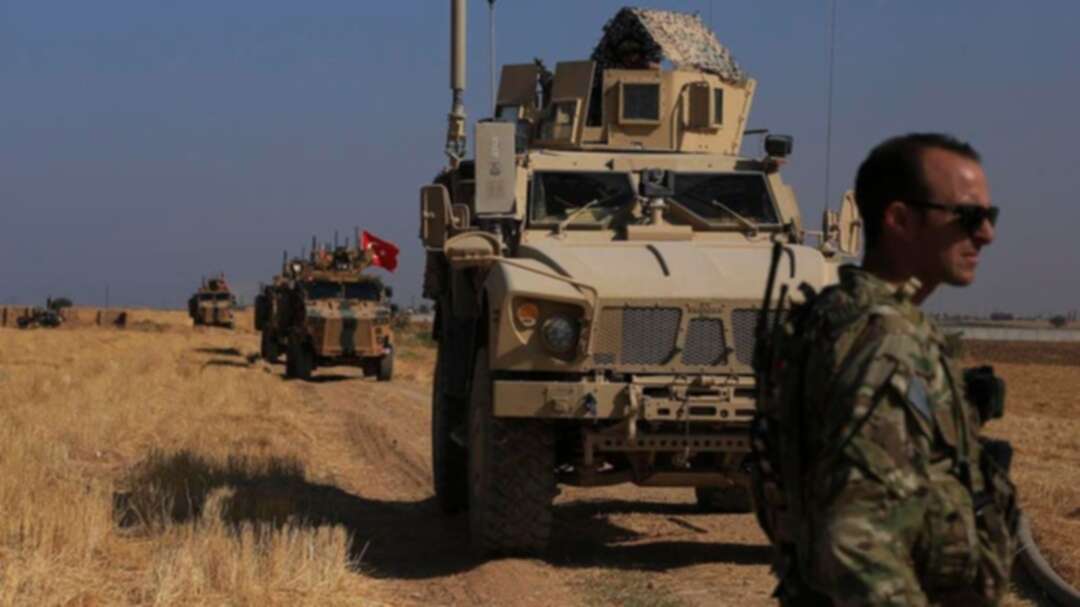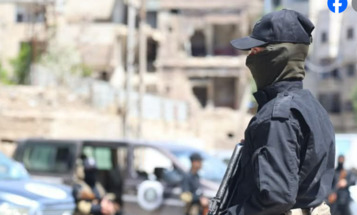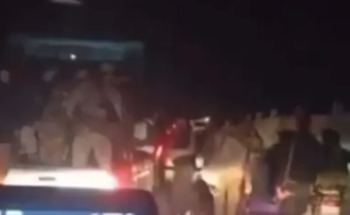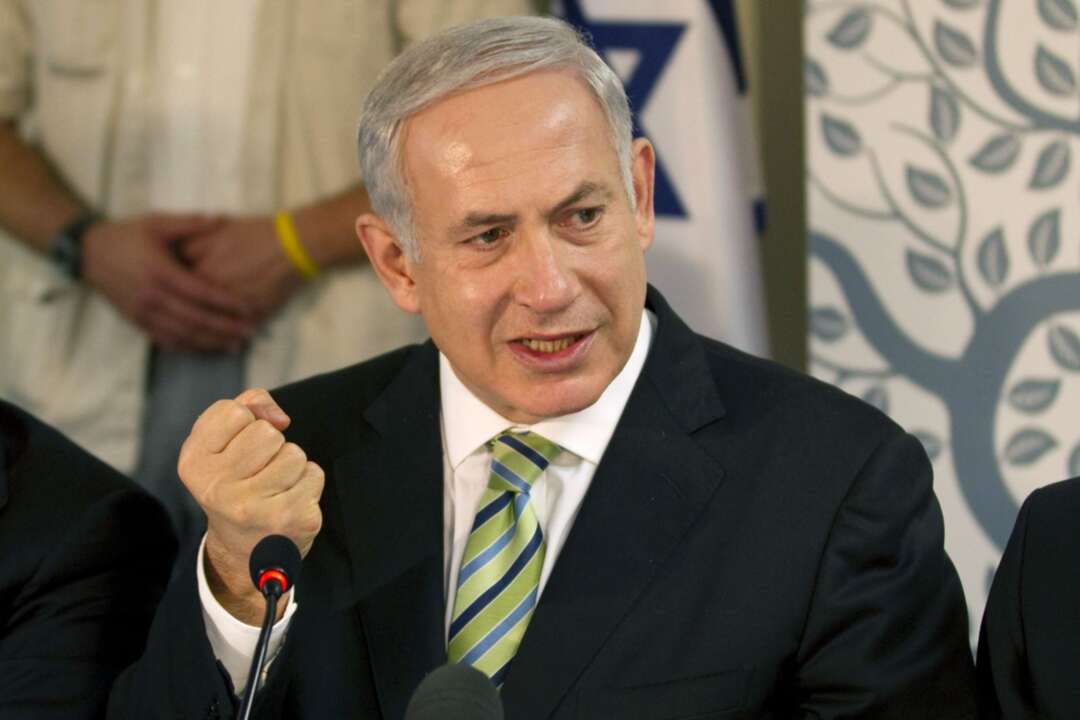-
US, Turkey conduct northeast Syria patrol amid new concerns

The US-led coalition and Turkey conducted on Friday their third joint patrol in northeastern Syria amid renewed concerns the plan designed to defuse tensions between Washington’s two allies - Ankara and the Syrian Kurds - may not be enough.
Turkish Defense Minister Hulusi Akar reiterated Ankara’s stance that it won’t accept delays in the creation of what it calls a “safe zone.” Turkey could act alone to set it up, he said, reviving concerns about a possible Turkish military operation.
A senior Syrian Kurdish official said her group is taking the renewed Turkish threats seriously and called for measures to prevent an attack and the collapse of the agreement.
Pentagon spokesman Cmdr. Sean Robertson said any “uncoordinated military operations by Turkey would be of grave concern as it would undermine our shared interest of a secure northeast Syria and the enduring defeat of” the ISIS.
Ankara and Washington agreed in August to carry out the joint patrols and remove Syrian Kurdish fighters from the borders. But they still disagree on the size of the area along the Syria-Turkey border and who is to monitor it.
The Americans and the Kurds call the measures a “security mechanism.”
The Friday patrol followed a telephone call late Thursday between Akar and US Defense Secretary Mark Esper in which Akar said Turkey would end the joint patrols “if there are distractions, delays,” according to a statement from the Turkish Defense Ministry.
Akar urged the US to end its support of Syrian Kurdish fighters, who were the coalition’s partners in the battle against ISIS militants in Syria.
However, Ankara views them as an extension of a Kurdish insurgency within Turkey. It has repeatedly threatened to carry out a military operation to push the Kurdish fighters back from its borders.
Turkey had carried out military incursions with allied Syrian groups in western Syria to drive out Kurdish fighters, as well as ISIS militants, and has stationed troops there.
But a Turkish military operation in northeastern Syria would carry a larger risk, bringing troops into a zone where at least 1,000 US soldiers are deployed.
Akar told his US counterpart that Turkey “would not allow the establishment of a terror corridor to its south.”
The coalition said the patrol went ahead as planned and Turkey’s Defense Ministry said it was in an area east of the town of Tal Abyad.
“Continued success of the security mechanism will prevent (ISIS) from remerging” while meeting the security interests of Turkey, said Coalition spokesman Col. Myles B. Caggins III in a statement.
Washington says the deal reached in August aims to address Turkey’s security concerns.
So far, fighters from the most prominent Syrian Kurdish group - the People’s Protection Units or YPG - have moved away from border posts.
But Turkey remains unhappy with the size of the area it calls a “safe zone,” calling for a 30-kilometer deep (19-mile) zone monitored by Turkish soldiers. Currently, the designated area is no deeper than 14 kilometers (9 miles.) It also says it wants some of the 3.6 million Syrian refugees in Turkey to return there.
Turkish President Recep Tayyip Erdogan told parliament that Turkey plans to settle 2 million refugees in the zone and will hold a donors’ conference to help build homes and infrastructure for them.
It was not clear how Turkey planned to move the largely Sunni Arab Syrians it is hosting from many parts of Syria into the Kurdish-dominated region, and whether the US is on board.
“The Americans are trying to absorb (Erdogan’s) anger but it is likely he wants to impose realities on the ground through a partial attack,” said Ilham Ahmed, a senior Syrian Kurdish official.
Ahmed said the Turkish threats are real amid continued mobilization on the ground and government statements to the public about a possible attack.
“This will have dire consequences, including the collapse of the security mechanism, revitalizing (ISIS), creating instability and possible clashes with the Turkish army,” she said.
Separately, Turkey-backed Syrian fighters in northwestern Syria announced they have united into one group called The National Army. The restructuring brings together fighters present in Idlib and Hama provinces and the coastal area who formerly operated under the National Liberation Front, and those in rural Aleppo.
Since 2016, Turkey has been training Syrian fighters who took part in Turkish military incursions in northwestern Syria and are now part of the Ankara-backed administration there.
Mustafa Sejari, a National Army commander, said there are now about 100,000 fighters operating in the Turkey-backed national army.
The unification could also set the stage for a possible confrontation with Idlib’s dominant extremist groups, including Hayat Tahrir al-Sham, HTS or Huras al-Din.
“We face many tasks internally, regarding HTS or externally to ward off Syrian government forces if they try to enter Idlib or violate the cease-fire,” Sejari said.
Idlib is the last area held by opposition fighters, without foreign power presence. Syrian government troops have been carrying out a military offensive there, but a cease-fire has brought a lull to the fighting.
It was not clear how the new opposition forces restructuring would affect government plans.
You May Also Like
Popular Posts
Caricature
BENEFIT Sponsors BuildHer...
- April 23, 2025
BENEFIT, the Kingdom’s innovator and leading company in Fintech and electronic financial transactions service, has sponsored the BuildHer CityHack 2025 Hackathon, a two-day event spearheaded by the College of Engineering and Technology at the Royal University for Women (RUW).
Aimed at secondary school students, the event brought together a distinguished group of academic professionals and technology experts to mentor and inspire young participants.
More than 100 high school students from across the Kingdom of Bahrain took part in the hackathon, which featured an intensive programme of training workshops and hands-on sessions. These activities were tailored to enhance participants’ critical thinking, collaborative problem-solving, and team-building capabilities, while also encouraging the development of practical and sustainable solutions to contemporary challenges using modern technological tools.
BENEFIT’s Chief Executive Mr. Abdulwahed AlJanahi, commented: “Our support for this educational hackathon reflects our long-term strategic vision to nurture the talents of emerging national youth and empower the next generation of accomplished female leaders in technology. By fostering creativity and innovation, we aim to contribute meaningfully to Bahrain’s comprehensive development goals and align with the aspirations outlined in the Kingdom’s Vision 2030—an ambition in which BENEFIT plays a central role.”
Professor Riyadh Yousif Hamzah, President of the Royal University for Women, commented: “This initiative reflects our commitment to advancing women in STEM fields. We're cultivating a generation of creative, solution-driven female leaders who will drive national development. Our partnership with BENEFIT exemplifies the powerful synergy between academia and private sector in supporting educational innovation.”
Hanan Abdulla Hasan, Senior Manager, PR & Communication at BENEFIT, said: “We are honoured to collaborate with RUW in supporting this remarkable technology-focused event. It highlights our commitment to social responsibility, and our ongoing efforts to enhance the digital and innovation capabilities of young Bahraini women and foster their ability to harness technological tools in the service of a smarter, more sustainable future.”
For his part, Dr. Humam ElAgha, Acting Dean of the College of Engineering and Technology at the University, said: “BuildHer CityHack 2025 embodies our hands-on approach to education. By tackling real-world problems through creative thinking and sustainable solutions, we're preparing women to thrive in the knowledge economy – a cornerstone of the University's vision.”
opinion
Report
ads
Newsletter
Subscribe to our mailing list to get the new updates!






















